
Arquivo para a ‘Information Science’ Categoria
The state is naked or in new clothes
Hans Christian Andersen’s tale The emperor’s new clothes seem to be the origin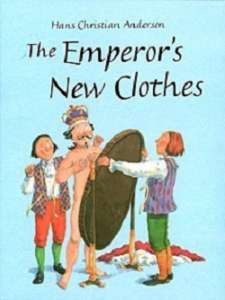 of the phrase “king is naked”, which tells the story of a king who spent his life preoccupied with his clothes and one day found two charlatans who claimed to have one cloth that quickly turned cloths into clothes.
of the phrase “king is naked”, which tells the story of a king who spent his life preoccupied with his clothes and one day found two charlatans who claimed to have one cloth that quickly turned cloths into clothes.
Costumed the king gave them a good sum of money and the two went to work with a fictitious yarn, when the king’s day premiered his clothes will seek it and although he sees nothing, he wears the imaginary clothes and goes to a a great procession without any clothes, but his subjects also pretend that the king is dressed, until they pass by a child that innocent that is said that the king did not wear anything, the father asks her to shut up, because the King does not put himself in question.
So today is the state situation, corruptions and desmandos are everywhere, in some places there are punishments, but most people prefer to believe that the modern state has its reason to exist, after all the rulers are necessary and democratically elected.
It turns out that rulers who are true caricatures of dictators, even their time has passed, such as the Welfare State (the extension of the concept of citizenship to the end of post-war totalitarian governments) is over now we are in the aftermath and the state is naked .
The king represents the belief in norms and conventions, which in the case of the state is his constitution and his interpretations, in the human case is the impossibility of seeing something beyond his immediate interests, as the king was his beautiful clothes and that makes him bet in magical clothing.
The robes are new, but the empires that haunt everyone are already known.
There is no magic, a ruined economy, a decadent education and a growing violence in Brazil.
ANDERSEN, H. C. The Emperor’s New Clothes,USA: Parragon-books. 2005.
Between the logic of prohibition and permissiveness
The fact that the modern state is experiencing a crisis is easy to observe by the number of authoritarian governments that grows all over the planet, especially in the West and the Americas, until a few years ago, a nationalist discourse in the United States of America and the return of some authoritarian governments in Latin America.
governments that grows all over the planet, especially in the West and the Americas, until a few years ago, a nationalist discourse in the United States of America and the return of some authoritarian governments in Latin America.
Education for democracy and for humanism has failed in modernity, as Peter Sloterdijk noted in Rules for the Human Park, which is nothing more than an answer (dialogue is good to be true) of Heidegger’s Letters on Humanism, where he asks : “What domesticates man if in all previous experiences with the education of mankind remained obscure who or what educates educators and for what? Or is it that the question of the care and training of the human being is no longer formulated in a pertinent way in the field of mere theories of domestication and education? “(Sloterdijk 2000).
Modern education is to the rights and duties of the state, even if the name has been erased, the famous “moral and civic education,” where civism and morality are referred to the state. In biblical logic, where agapic love is fundamental and not always easily understood by theological culture, especially when there is social and political polarization.
It is fundamental that relationships are established and that they have respect for the opinion and action of others, and this is faced with the maxim: “do not do to the other what you do not want done to you,” the so-called golden rule.
It is common to use the discourse of the other, for the lack of thought, it is not about plagiarism, only the use of maxims rather than something elaborate, as soon as something becomes evident. soon there are those who adopt the slogans, without always adopting the actions, but Jesus says to the disciples to those who used his name Mk 9: 39-40: “Do not prohibit it, for no one performs miracles in my name and then speaks ill of me. Whoever is not against us is in our favor.”
This should be the paraconsistent logic of dialogue, never the exclusivist logic: “who is not with us is against us”, but this logic has penetrated politics and society, so the speeches are becoming more authoritarian and more exclusive to those who do not according to a given flag.
What is illogical in any logical system is to consider the logic of hatred to be inclusive, humanism has not ended, a humanism that preaches the logic of state power has ended.
Sloterdijk, Peter. Regras para o parque humano (brazilian edition, Rules for the human park – a response to Heidegger’s letter on humanism). Trad. José Oscar de A. Marques. São Paulo: Estação Liberdade, 2000
The paraconsistent logic
Kurt Gödel’s paradox, that a complete system is inconsistent was fundamental to a new phase in formal logical principles, and cooperated with the emergence of the computer.
a new phase in formal logical principles, and cooperated with the emergence of the computer.
It was the Peruvian philosopher Francisco Miró Quesada, unknown to many Latin American scholars, who coined the word paraconsistent in 1976.
The Brazilian Newton da Costa who developed this theory has become very important in several areas, including philosophy and Artificial Intelligence. In the figure, the axis to the side that goes from u 0 and u 1 , is called degree of belief, but the truth has points A for consistent and C for inconsistent, having a lot of application to everyday life.
The study applied to semantics mainly explores paradoxes, for example, it can be said that a blind man sees certain circumstances, also the study of different forms of perception and abilities can help the parameters of the deep mind.
We have already stated that neologicism can precisely help AI in this phase of deep intelligence, for example, in the study of natural languages, the language of everyday life.
The idea that A and non-A could exist was inconceivable in Western philosophy, is the principle of the excluded third, which comes from Parmenides and was consolidated in Aristotle. Paraconsistent logics are purposively more “weak,” terms to refer to this break with classical logic, for they solve few valid propositional inferences in the classical sense of logic The logic of paraconsistent languages, however, are more conservative than those of classical counterparts, and this changes Alfred Tarski‘s hierarchy of metalanguage.
The influence on natural language was anticipated in 1984 by Solomon Feferman who stated “… natural language abounds in expressions directly or indirectly self-referential, although seemingly harmless, all of which are excluded from the, because in daily life, in truth we are paraconsistentes.
Quantum physics and politics
Mechanical physics, especially the celestial mechanics of Sir Isaac Newton, took the idea of cause and effect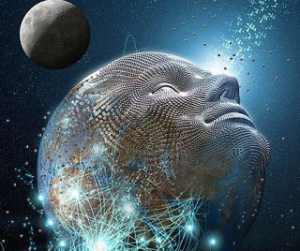 in the same proportions of a mechanical machine, it is said popularly to each cause there is a contrary reaction in the opposite direction, it was for politics as ” man werewolf “of Hobbes.
in the same proportions of a mechanical machine, it is said popularly to each cause there is a contrary reaction in the opposite direction, it was for politics as ” man werewolf “of Hobbes.
Then came the empiricism of Hume, in fact it is more connected to the theory of knowledge, which comes from the idea that I can only say something from my sensory experience, just as mechanicism, all knowledge and object of it is out of being and only there are perceptions. With politics, it is what the masters of political marketing exploit, working with people’s emotions so as not to give them a reference to the truth, but to deceive them.
The critique of this political “philosophy”, since the subject is more comprehensive, comes from the middle ages where in 1200 it was already defined as “state science”, but all criticism of this set of empirical and idealistic ideas is called Empirical-criticism,
Marx developed it but later was updated by the Microphysics of Power, the idea no longer of the state but of the power that constitutes the “individual”, which Peter Sloterdijk, Gadamer, Ricoeur and others consider already already surpassed.
If we want to adapt the quantum physics of the physical world to the world on the human scale, which is ontological, we can think that there are two possible, more democratic strands that lead to the understanding of the world as Nature and the other as the search for “the Just” .
John Rawls, Habermas and Michael Sandel, all still strongly influenced by so-called “critical theory”, and in the matter of Nature thoughts Hannah Arendt, Raymond Aron, Norberto Bobbio, Phillip Pettit, Robert Nozick, and of course there is others.
The assertions of quantum physics with the infinitely small (the particles) and the infinitely large (the bodies in the universe) change our idea of causality, in politics of which the winners tell the story, for in quantum physics the energy dimension, mass and energy that is 94% of the universe, and has an influence on it, would be an approach of the collective unconscious, the forces that do not appear and that influence the political process, present in the “unconscious.”
Another important part is that the observer’s gaze defines reality, so the suspect idea of neutrality has been overcome, Werner Heisenberg, Eugene Wigner, Roger Penrose, and Erwin Schorodinger have developed this quantum view.
In politics it means that the sight of simple people does influence politics, education is essential to democracy, and only manipulating it into a disaster.
And you who say that I am
The truths of the facts only reveal in the truth of the acts, it is so for the daily life, so for the politics and for the speeches, if we live in the post-truth, it has the limit of the acts.
and for the speeches, if we live in the post-truth, it has the limit of the acts.
We like day to day to create narratives more favorable to our convenience and our ideals, but almost always the unveiling exists beyond language and speech.
The creation of a logical intelligence, in deeper layers now called Deep Mind or Deep Learning, is nothing more than the artificial response to the virtual world, part of the real next to the current one, a logic consistent with the action, the human will always be some dyslexia.
Full consciousness is linked to full dialogue, where discourses can interpenetrate in the hermeneutic circle, the difference with artificial intelligence is that the machine learns from humans, but it will be difficult for it to escape from formal logic, while the human is ontological.
This means that we are in the age of Being, a deeper manifestation of what we are, and contrary to what anti-technology discourse supposes, it is precisely this that can help human speech in the essential aspects of logic, which we sometimes falsify to be correct .
Historically technology is not displaced from human needs, it is often the poor adaptation or use of human relationship with technology that causes some disruption and misunderstanding of its true role, which is to assist the craft, art and technique, says the Greek origin of the word techné.
In the biblical passage that Jesus tests his apostles, he asks: “And you who say that I am” (Mt 16:15), for some was a great prophet, for others a return from Elijah or even from Moses, not always God , that is, the Divine wisdom between us.
The reprehensible use of the evangelical message in politics is not for the fact that they should be outside the interests of the common good and of society in general, but it is the possibility of instrumentalizing and using in favor of a certain discourse that is not always coherent with the gospel
Revolutionary method for videos
Researchers at Carnegie Mellon University have developed a method that without human intervention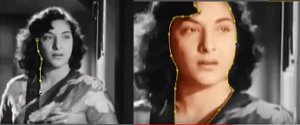 modifies a video content from one style to another. The method is based on a data processing known as Recycle-GAN that can transform large amounts of video making them useful for movies or documentaries.
modifies a video content from one style to another. The method is based on a data processing known as Recycle-GAN that can transform large amounts of video making them useful for movies or documentaries.
The new system can be used for example to color films originally in black and white, some already made like the one shown in the video below, but the techniques were expensive and needed a lot of human effort during working hours.
The process arose from experiences in virtual reality, which in addition to the attempts to create “deep falsities” (altering objects or distorting contents, could appear a person inserted in an image, without it was allowed, in everyday scenes almost always happens this and much people do not accept.
“I think there are a lot of stories to tell,” said Aayush Bansal, a Ph.D. student at the CMU Robotics Institute, who said of a film production that was the main motivation to help design the method, he said, allowing that the films were produced faster and cheaper, and added: “it is a tool for the artist that gives them an initial model that they can improve,” according to the CMU website.
More information on method and videos can be found at Recycle-Gan website.
Digital collaboration between Art Museums
An open source digital software platform for art curation and sharing between museums and other art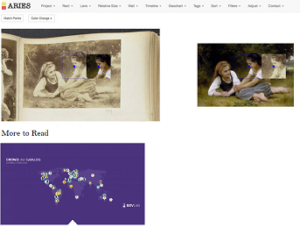 exhibition environments was developed by collaboration between researchers at New York University (New York University) and art analysts and historians at the Frick Art Library Reference of New York.
exhibition environments was developed by collaboration between researchers at New York University (New York University) and art analysts and historians at the Frick Art Library Reference of New York.
The ARIES platform, available for free from ARtImageExplorationSpace.com, simplifies the organization, exploration and analysis of digital collections, allowing experts to manipulate images.
The developed toolkit allows users to enlarge features, filter images, add annotations, change lenses, tag images, select and color images (see picture) and share collections.
Claudio Silva, of NYU Tandon, stated that “since ARIES is also Web-based, it is portable and free of the complexities of installing a system.
This is especially important for our target users, who have little or no computing experience.” ARIES was developed by a multidisciplinary team, including Claudio Silva and Juliana Freire, and by professors from the Department of Computer Science and Engineering of NYU Tandon and faculty members of VIDA Center Lhaylla Crissaff and Marcos Lage, are visiting NYU researchers Tandon João Rulff, VIDA associate researcher Luke DuBois, artist, professor and co-director of NYU Tandon’s integrated digital media program; and Louisa Wood Ruby and Samantha Deutch, research director and assistant director of the Collection History Center at the Frick Art Reference Library, respectively.
Claudio Silva said the team is releasing new features incrementally and plans to make the software more robust, in order to improve documentation, tutorials and case studies in order to broaden the user base. As you can see at least, the project was part of the CNPq-Brasil scholarship support and is supported by a grant from the National Science Foundation Computational Research Infrastructure (CRI).
Frick Art Reference Library was founded nearly 90 years ago (1934) by Henry Clay Frick’s daughter (1849-1919), Helen Clay Frick, is in the building at 10 E. 71st Street, the Library is one of the leading references in history and collections of art.
We’re getting close, but what?
At age 20, Carl Seagan’s book “Contact” (1985) impressed me in such a way that it never left my
imagination, spoke of wormholes (wormholes are possible paths for the fourth dimension), theology and search for lives on other planets, I made a road to materialism that lasted 20 years, any ilusions.
At 42´s years old, the film Contact (1987) once again impressed me, the protagonist to Ellie Arroway (Jody Foster), in the fiction era of SETI (Search for Extraterrestrial Intelligence), I now discover that the department exists at the University of Berkeley and there they are picking up signals from a star coming from a distant star.
Curious and thought-provoking, it is precisely the phase in which I return to study Teilhard de Chardin’s Noosphere and search the fourth dimension, we are preparing a hologram and an Ode to Christus Hypercubus at Lisbon, just a reference of Salvador Dali’s fourth dimension.
SETI researchers from Berkeley, led by student Gerry Zhang and some collaborators, used machine learning to build a new algorithm for radio signals they identified in a 5-hour period on August 26, 2017 (pull my birthday ), but it should only be a coincidence.
Zhang and his colleagues with the new algorithm have resolved to reanalyze the data for 2017 and found 72 additional explosions, the signals do not seem like communications as we know, but real explosions, and Zhang and his colleagues foresee a new future for the analysis of radio astronomy signals with use of machine learning.
As in the film the signal needed a long time to be decoded, Turing who studied the Enigma machine captured from the German army during World War II, would love to study it today, he deciphered it. The code universe is not therefore a human artifact, space is full of it, not to say it is from any civilization, but they are there, the background radiation for example, discovered in 1978 by Penzias and Wilson, ratified the Big Bang and gave them a Nobel Prize in Physics.
The new results will be published this month in The Astrophycal Journal, and is available on the Breaktrough Listen website.
Truth and deeds
It may seem strange to the modern discourse that the truth is beyond the facts, it is because what is factual is considered what would be beyond acting and thinking, but it is not, would say the Brazilian writer Rubem Alves: “Beauty is beyond words “.
factual is considered what would be beyond acting and thinking, but it is not, would say the Brazilian writer Rubem Alves: “Beauty is beyond words “.
That is why Heidegger, Gadamer, and Byung-Chul Han and others, of course, could not speak of the truth without ceasing to keep the work of art in mind, not for the idealistic conception of “beauty” but for that which is between action and contemplation.
One of the most beautiful arts that is theater, not coincidentally has pieces divided into “acts”, but that should not be called re-presentation, presentation only, see it live is almost an imposition, see it filmed becomes something else or cinema or television, now Web videos, which are successful, but this yes are re-presentations, with many fakes.
And what should direct our actions, is in the previous post to quotation from Gadamer: ” what man needs is not only the persistent positioning of fundamental questions, but the sense of what is feasible, what is possible, what is correct, here and now “(Gadamer, 1987) and not a new modern mythology.
The truth of the acts has always been difficult to accept and even understand for men, what has always been “beyond words” in the acts, says the evangelist Mark (8: 27-29) about the acts of Jesus and that his disciples attended: “Who do men say that I am?” They answered, “Some say that you are John the Baptist; others that are Elijah; others, still, that you are one of the prophets.” Then he asked, “And you, who do you say that I am?” Even though they doubted Peter said he was the Messiah, but they said “he does all things well.”
The post-factual or post-truth today is only shocking nowadays by the number of narratives and the number of people capable of following modern pseudo-mythologies, they want only the facts that are appropriate, but the coherence of the acts remains as rare as it was in all the history.
The Brazilian educator Paulo Freire gives the sentence: “It is fundamental to reduce the distance between what is said and what is done, in such a way that in a given moment your speech is your practice”.
The truth and / or method?
The positive truth established by science and the enlightenment had two foundations: the idea 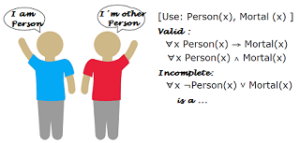 (idealism) linked to experience (empiricism), whose inglorious attempt was to create a universal encyclopedia of knowledge, Kant’s sapere audi great achievements of modernity were insufficient to abolish the war, created a crisis of values, a concentration of riches and a worldview with signs of fragility.
(idealism) linked to experience (empiricism), whose inglorious attempt was to create a universal encyclopedia of knowledge, Kant’s sapere audi great achievements of modernity were insufficient to abolish the war, created a crisis of values, a concentration of riches and a worldview with signs of fragility.
What transdisciplinarity and sober educators are demanding, a return to life-giving sciences, the humanistic perennials, Heidegger’s Charter on Humanism, in which he cries: “But in this we must not forget that” subject and object ” are inadequate expressions of the metaphysics which took over very early on the interpretation of language, in the form of Western “Logic” and “Grammar” (Heidegger, 2005: 8).
What we call interpretation, Heidegger asserts in paragraph 32 of “Being and Time” (it is mentioned in “Truth and Method”), is actually developing “the projected possibilities of understanding”, it means a dialogic process where it is possible to retrieve the pre-concepts and a new “fusion of horizons”, in this sense the Hermetic is opposed to the hermeneutic.
The preconception, seen as anticipation of human experience, attests to our bond to the tradition in which we are immersed, but we need what Gadamer calls “consciousness of the history of effects” (possible translation of “Wirkungsgeschichtliches Bewusstsein”), as explained in her text “determined by a real historical becoming, in such a way that it does not have the liberty to situate itself in the face of the past”, hence its criticism of Dilthey.
Our estrangement from the truth, Gadamer begins with aesthetics, a culture of appearances – through which his book begins, recapitulates in the idealists the ideas of taste and experience (“Erlebnis”), the latter always put more emphasis, albeit in ways in Dilthey and Husserl.
They will be developed in such a way as to falsify the “sciences of the spirit” (see in his work “The Extension of the Question of Truth to Understanding in the Sciences of the Spirit”), in an analytical effort to concretize the so- his whole critique of Schleiermacher’s romantic hermeneutics, the “Aufklärung” (Illustration), and the historicism of Droysen, Ranke, Dilthey, and Hegel.
His criticism goes to the bottom of the notion of aesthetics of a work of art, when a painter, with certain technique or style, goes to painting with a certain technique, what is read in the picture is not the soul of artist.
Her analysis is also from the hermeneutic analytic, in criticizing Schleiermacher also gives reason to say that in the work of an artist, a poet, a writer would be the foundation to perceive the authorial intention, so the exegete would know more closely than his own author and not only his letter or painting, to know the Gospel of St. John would be, first of all, to know Saint John, in which Gadamer rejects the postulate of the Romantic school.
But he will accept the romantic school in “Let’s face the facts” of “Aufklärung”: “he reads the Johannine text as Protestant, as a Catholic, a third as a historian of Palestine.” If we swept all these presuppositions, perhaps in the written lines, pristine, “now the Aufklärung” desired the
meeting of an unprejudiced interpretation, which would remove both the tradition of authority and the authority of tradition (ie idealism!), in which the romantics were right.
There remain two snags, Sloterdijk’s answer to Heidegger and Ricoeur’s question: would it then be Truth or Method (or, not and), that is, truly ontological?

